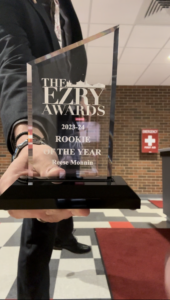Last week, Wittenberg had hardware trouble with the computers linked to the printing system complicating life for students and faculty.
 According to IT system administrator Dale Erlewine: “A storage array hard drive failed; the array supports multiple servers. Among the affected servers was the campus print server. The storage device is designed [for] when a hard drive fails to transfer, or ‘rebuild,’ the data to a ‘hot spare’ drive, preventing data loss. When the rebuilding process begins, the storage array divides its resources between communicating to servers, and the internal data transfer to the hot spare. The system handles the increased load by communicating on a slower time-share basis. This time-share effect causes some servers to operate more slowly while still performing all functions, only in ‘sloth mode.’ Unfortunately, the functions of the print server, i.e. storing and processing print jobs, communicating with the SQL database for accounting, and communicating with each printer to release the print job requires a specific time window for successful operation.”
According to IT system administrator Dale Erlewine: “A storage array hard drive failed; the array supports multiple servers. Among the affected servers was the campus print server. The storage device is designed [for] when a hard drive fails to transfer, or ‘rebuild,’ the data to a ‘hot spare’ drive, preventing data loss. When the rebuilding process begins, the storage array divides its resources between communicating to servers, and the internal data transfer to the hot spare. The system handles the increased load by communicating on a slower time-share basis. This time-share effect causes some servers to operate more slowly while still performing all functions, only in ‘sloth mode.’ Unfortunately, the functions of the print server, i.e. storing and processing print jobs, communicating with the SQL database for accounting, and communicating with each printer to release the print job requires a specific time window for successful operation.”
Due to several hundred print job requests that had been sent to the system during this transfer time span, the system “gridlocked.” After print jobs started to expire past the eight hour print time, it became easier to deal with the computer system. On last Tuesday, the IT department “activated an alternate print server to reduce the printing load while the drive rebuild process completed,” Erlewine said.
Erlewine said that these system errors do not occur often, as it is a hardware issue. According to Erlewine, only two related issues have occurred over the last four years.
During last semester’s finals week, a similar problem occurred.
“It was the first disk failure since the equipment was installed in 2012,” Erlewine said. “It was also our first experience with the time-delay effect on the print server. During that episode, we developed and implemented a workaround to bypass the time-sensitive processes, enabling direct printing.”
The IT department is making plans to better the system for the future.
“Our plan to improve server reliability is to replace the old-fashioned, spinning platter type, disk drives with solid state drives,” Erlewine said. “These solid state drives will provide lightning-fast data response and state-of-the-art reliability. The new equipment is already on campus; we are in the process of bringing the new storage on-line.”





